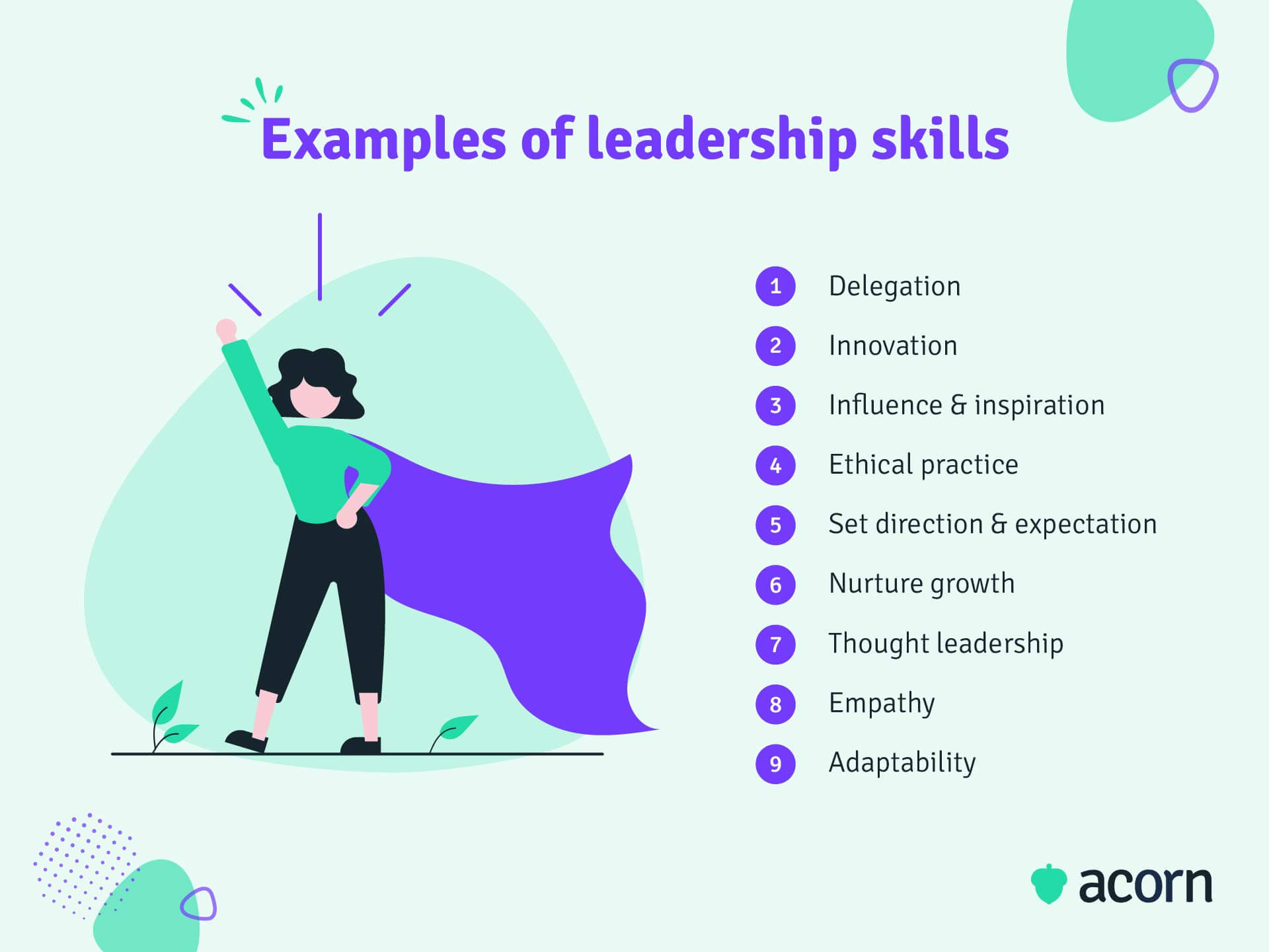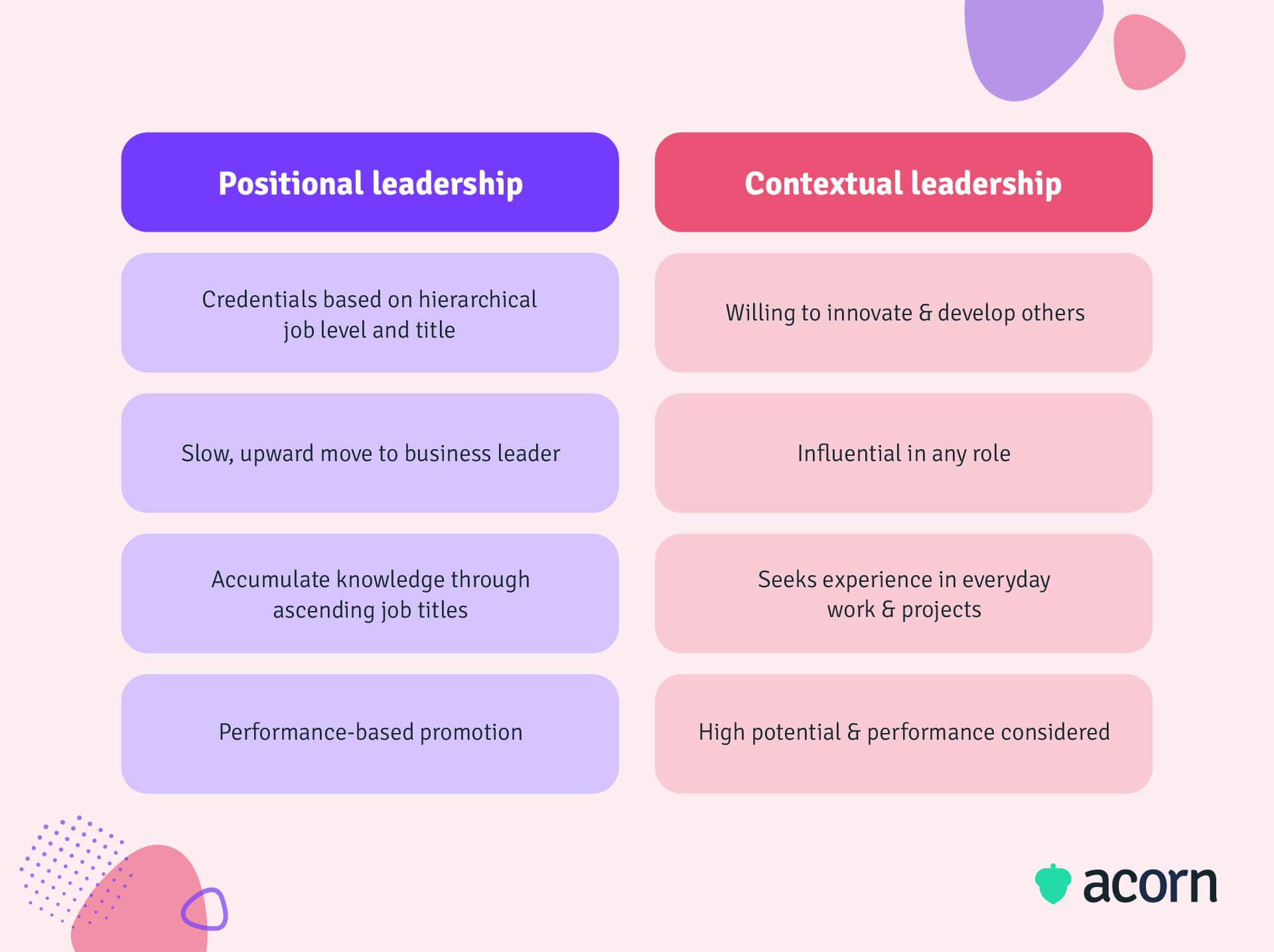The Value of Developing Leadership Skills in the Workplace (and Best Practices)
Reading Time:

Lead the pack with the latest in strategic L&D every month— straight to your inbox.
SubscribeDeveloping the right leadership skills is valuable not just for employees, but your organisation. Emphasis on “right” and “your organisation”.
We often think of leadership as a traditionally linear, upward and slow-going career pathway to the top, especially in large corporations.
But there’s a different pathway emerging and small to midsize businesses today. They know there’s little value in keeping strategic and cultural capabilities at the top of your totem pole where most of your workforce can’t benefit from them. What happens when top leaders leave? Who is ready to take over your critical roles?
Developing leadership skills throughout your workforce helps you create a sustainable pipeline of talent. It also ensures employees remain engaged and invested in your company’s mission, safeguarding you against changes in the landscape.
Let’s dive into the importance of ever-present leadership, how to nurture it and best practice for developing leadership skills.
What makes a good leader?
There are many lists out there that purport to define the traits of a good leader. “Good” leadership looks different to everyone—but a common thread emerges when you look closely. Here’s a take from former Meta COO Sheryl Sandberg:
“Leadership is about making others better as a result of your presence and making sure that impact lasts in your absence.”
Then there’s this perspective from Nelson Mandela:
“It is better to lead from behind and to put others in front, especially when you celebrate victory when nice things occur. You take the front line when there is danger. Then people will appreciate your leadership.”
The late Jack Welch, former CEO of GE, said:
“Before you are a leader, success is all about growing yourself. When you become a leader, success is all about growing others.”
We could keep going, but we have other leadership things to discuss. We’ll end this section with a thought from Dwight Eisenhower:
“Leadership is the art of getting someone else to do something you want done because he wants to do it.”
What are leadership skills?
Leadership skills are the abilities and traits needed to influence and guide other individuals, teams and organisations towards a common goal.
As leadership is usually driven by soft skills and personality traits, not all leaders possess the same core leadership skills. The goals of an organisation determine the exact skills needed in business leaders.

Why are leadership skills important?
Firstly, leadership is a crucial role, responsible for crucial tasks. They translate strategy into action, set goals and direction, give focus to long-term activities and root daily work in the bigger picture. On the other hand, and considering leadership is rooted in interpersonal skills, leaders set the tone. They shape the workplace culture, create safe spaces (or toxic ones) and demonstrate how others are expected to work.
Secondly, leaders aren’t always born. Developing leadership skills where they are only burgeoning or non-existent is important for effective succession planning, which in turn is key for:
- Identifying and filling skills and capability gaps
- Replacing subject matter experts and their niche capabilities
- Retaining and transferring mission-critical knowledge to new employees
- Avoiding the impacts of vacant roles and neglected strategic responsibilities.
Talent and career visibility are two reasons we pioneered the performance learning management system (PLMS). Powered by AI, it’s the only solution that guides learners to master the capabilities (i.e., the skills, knowledge, behaviours, tools and processes) of their roles that will drive organisational performance. And with capabilities mapped across your workforce within Acorn PLMS, you can identify and track individual behavioural change in line with succession plans.
Basically: Develop the exact leadership capabilities you need to promote from within.
The importance of leadership skills in the workplace
We defer to Josh Bersin, who talks about moving from leadership based on a designated job role to a work environment that calls for leaders everywhere.

As companies become flatter, formal sources of knowledge and authority are harder to distinguish. The hierarchy doesn’t define how work gets done anymore. Most employees will assume a leadership position at one point or another—even simply as project leader. Management responsibilities define the role, and people aren’t waiting years to become leaders anymore.
All this means to say you shouldn’t think of the effective leader as a rare commodity or one that takes years to develop. In fact, leadership development should be a constant process in your organisation.
The impacts of not continuously developing leadership skills
Succession planning should be an ever-present practice. At the very least, leadership skills development accounts for sudden vacancies. At a high level, it ensures productivity never dips, you have the right people in the right seats, and talent isn’t being wasted.
Productivity lags
Without clearly defined and sufficient leadership skills, you risk harming business strategy. Leaders translate strategy to measurable objectives, selling it as a story to generate internal buy-in.
Another part of this is focus. An effective leader knows that it’s better to be great at a few things than try your hand at many. They can align strategy with rewards systems down the line, which makes the difference in gaining individual motivation. In other words: They set the direction of work for teams and employees.
But without the core leadership skills to do this, the workplace flails. Strategy remains a closely guarded executive secret, which can sow the seeds of resentment in the workforce while causing a disconnect between everyday tasks and company outcomes.
Ill-fit promotions
Say a management role is soon to be vacant. The incumbent manager flags a high performer in their team for promotion. But when the individual contributor moves into the role, it becomes clear they’re missing key skills for managing others.
Part of continuous leadership development is capability and competency mapping. This shows the level to which certain leadership skills are mature to the standards your organisation has set.
You could gauge competency of the capability Influence in the following way.
- Foundational: Tailoring information for different audiences.
- Adept: Using interpersonal abilities to persuade people with differing perspectives and priorities.
- Advanced: Gaining buy-in and support for initiatives by leveraging relationships with senior players.
- Strategic: Using political skills and networking to gain external support and backing.
That would have shown if the IC could demonstrate leadership skills, let alone if they even want to take on a leadership role—before more responsibility is thrust upon them.
Top talent is passed over
Forget the traditional idea of “getting someone ready for leadership”. It is most effectively learned by doing, which is why neither job level nor performance are indicators of your future leaders.
High achievement doesn’t necessarily correlate to high potential. That rarely accounts for key leadership skills like adaptability, values-driven behaviour and situational awareness. These “intangible” qualities make high-potential employees 91% more valuable through 400% more productivity (see above).
Leadership skills development uncovers latent talent. But if you’re not encouraging leadership development in all your employees, you could face attrition at best, lose critical capabilities in a tough scenario or lose critical leadership capabilities to competitors at worst.
Best practices to improve leadership skills
To develop leadership skills, you need to hone in on what employees both want and need. You can’t say, “We want these leadership styles to emerge from a one-size-fits-all leadership journey“—because people learn differently, achieve success at different rates and are good at different things.
Therefore, some of the best practices to improve leadership skills aren’t formal training programs. Think more broadly about how day-to-day tasks can develop leaders.
- Provide inclusive, not exhaustive, development pathways
- Let employees find their own leadership style
- Get them learning in the flow of work
- Create a network of leaders.
Offer inclusive leadership development
Even in a flat organisation structure, there’ll be people and strategic management roles. The path to get there just doesn’t need to be straight up the career ladder.
Say there’s a graduate role who’s only worked in the company for six months. But they’re acing training for their required capabilities and their work is excellent. They’ve also blended into their team well and their peers seek them out for help.
All signs point to high leadership potential, but the traditional career move is from graduate to junior. If leadership development was only about job title, their talent would go unnoticed.
Conversely, you may have someone on the leadership pathway who’s pacing behind expectations. You can use tools like skills registers and capability development plans to uncover and personalise leadership skills development. When you link developing leadership skills to eLearning content, you can see what skills employees are advanced in or struggling with. This allows L&D to create personalised development experiences at scale, which means all employees can develop leadership skills.
Encourage leaders to specialise
Good leaders can learn leadership skills that are put to them, yes, but they also possess great self-awareness. They need to understand the complexities of the greater business environment and their corner of the business. Focus on the latter point.
Leaders can’t effectively lead if they need to be everywhere and all things to all people. It’s better to have leaders throughout your specialist functions, rather than a select few who need to craft a revenue-driving marketing strategy and understand the particulars of product engineering, while managing the complex cultural needs in human resources.
Effective leadership is also about developing the capabilities of those around them. Specialists can be available to their direct reports in the moment of need. On the other hand, watch out for leaders who micromanage to make sure work is done right or hoard crucial tasks to avoid overloading their teams and remain likeable. This means that weak team capabilities stay weak, and people don’t progress.
When leaders understand the needs of their people and environment, as well as the limits of their own abilities, you’ll reap greater effectiveness on the job.
Provide on-the-job training
Leadership development shouldn’t be divorced from the realities of the day to day.
Take effective communication. Teaching communication skills in an artificial environment won’t help budding leaders resolve conflicts between real people. They’ll miss body language cues, the history leading up to an event, the different communication styles of the people involved. Even more technical leadership skills like strategy execution require contextual understanding of the business environment.
On-the-job training ensures that performance issues can be corrected in real time and feedback is provided at the moment of need. It’s not about expecting employees to seek out learning themselves, but rather intertwining daily work with learning.
- Coaching is great for increasing confidence through small nudges from senior leaders.
- Mentoring formalises the coaching process with regular catchups and goals for progress.
- Stretch assignments expose
semployees to capabilities beyond their current field. - Micro and macrolearning through an eLearning solution gives employees immediate access to short bursts of helpful, codified information.
Mission-critical knowledge can be transferred quicker and easier when learning happens on the job. This benefits not only emerging leaders, but the pace of innovation and productivity in the workplace.
Create a leadership team
Don’t completely throw the traditional leadership model out the window. It still pays to have a central network of leadership roles in your organisation.
- Emerging leaders can receive honest feedback and support from other leaders.
- Cross-function collaboration is encouraged, which puts a diverse range of skills on complex projects.
- Key roles are unified around business strategy.
- You’ve got something of a litmus test to gauge who’s up to your leadership standard and who might still not be ready.
Key takeaways
As organisational hierarchies flatten, it becomes increasingly important to ensure the right strategic and interpersonal skills exist in all your employees.
Developing leadership skills is all about meeting leaders in the moment. You want to be providing opportunities for lifelong, daily learning. This ensures your high potentials aren’t neglected and you’re not putting the wrong people into critical roles. In short: Make leadership everyone’s responsibility and you’ll reap the rewards of increased and widespread innovation, productivity and engagement.